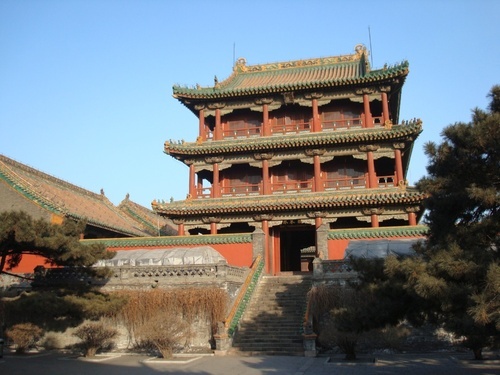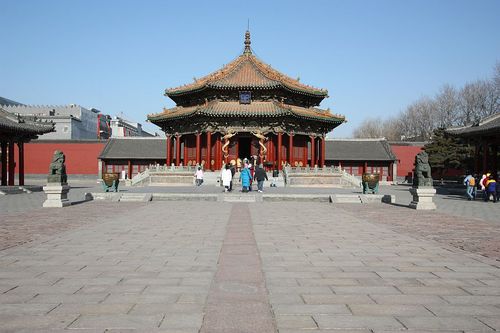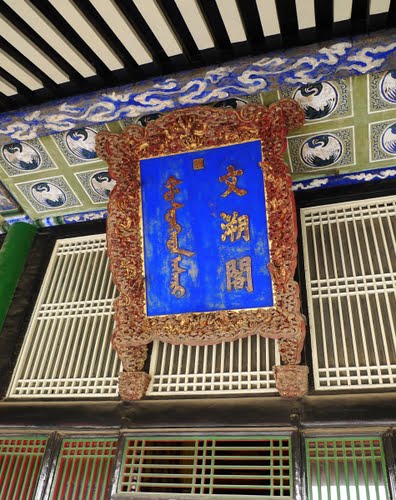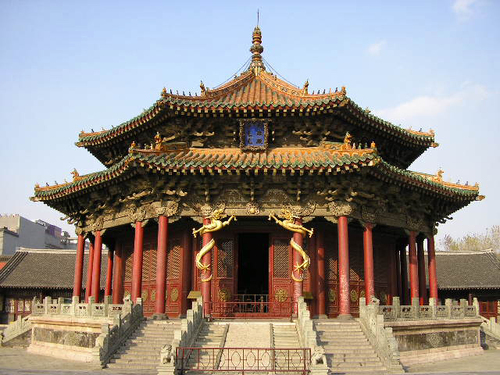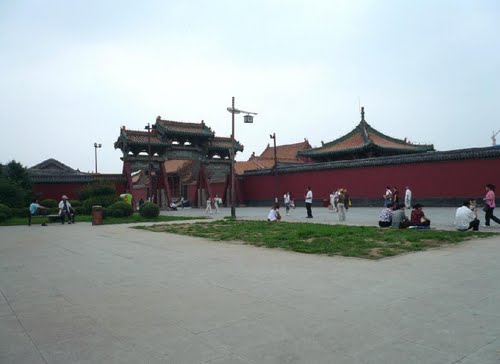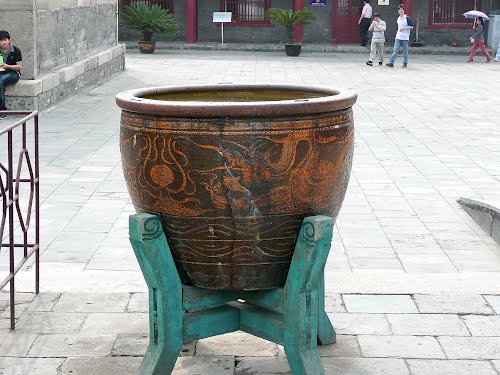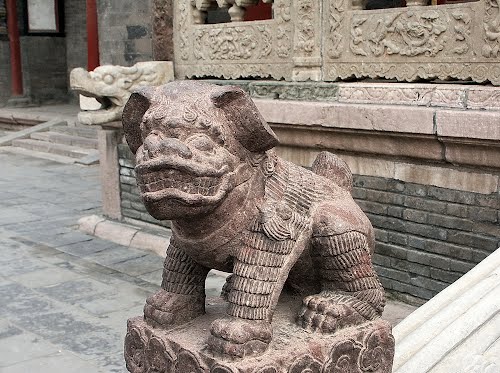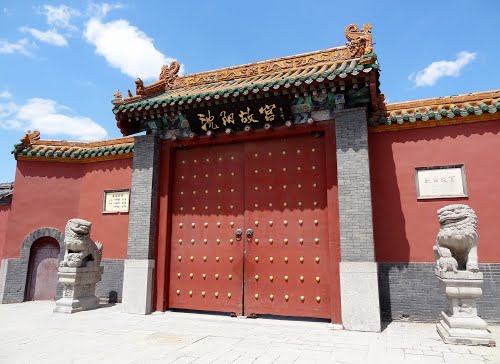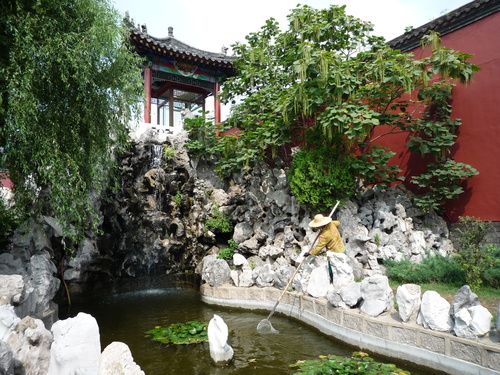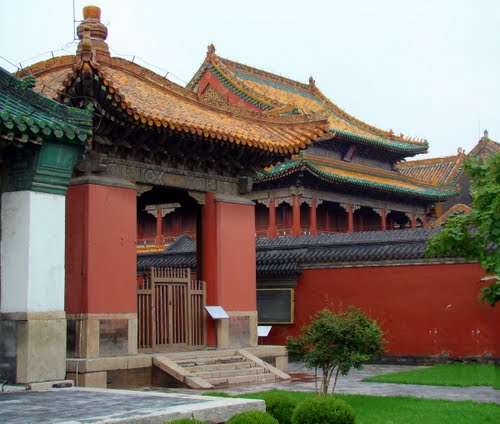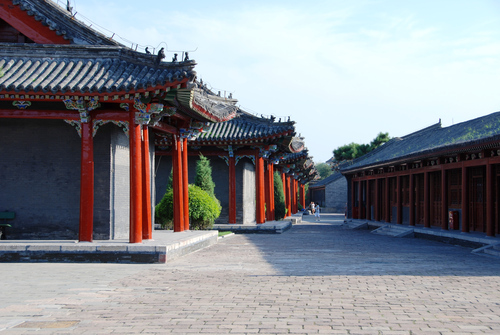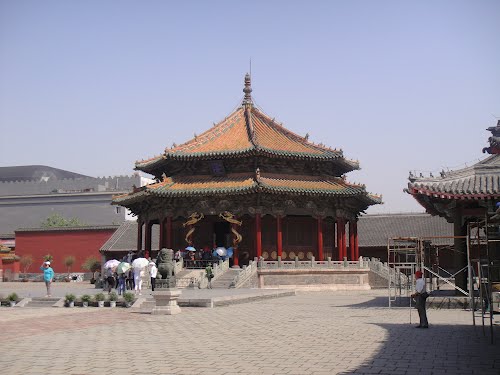The Mukden Palace or Shenyang Gugong, also known as the Shenyang Imperial Palace, was the former imperial palace of the early Manchu-led Qing dynasty in China. It was built in 1625 and the first three Qing emperors lived there from 1625 to 1644. Since the collapse of imperial rule in China, the palace has been converted to a museum that now lies in the center of Shenyang city, Liaoning province.
History
Early construction began in 1625 by Nurhaci, the founder of the Qing dynasty. By 1631, additional structures were added during the reign of Nurhaci's successor, Huangtaiji.
The Mukden Palace was built to resemble the Forbidden City in Beijing. However, the palace also exhibits hints of Manchu and Tibetan styles.
After the Qing dynasty replaced the Ming dynasty in 1644 in Beijing, the Mukden Palace lost its status as the official residence of the Qing emperor. Instead, the Mukden Palace became a regional palace.
In 1780, the Qianlong Emperor further expanded the palace. Successive Qing emperors usually stayed at Mukden Palace for some time each year.
Museum
In 1955, the Mukden Palace was converted into the Shenyang Imperial Palace Museum.
In 2004, it was included on the UNESCO World Heritage List as an extension of the Imperial Palace of the Ming and Qing Dynasties, or Forbidden City, in Beijing.

